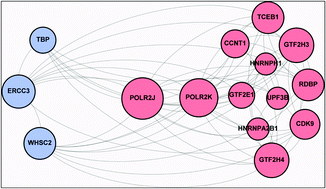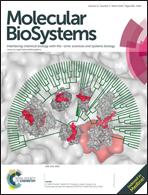GTA: a game theoretic approach to identifying cancer subnetwork markers†
Abstract
The identification of genetic markers (e.g. genes, pathways and subnetworks) for cancer has been one of the most challenging research areas in recent years. A subset of these studies attempt to analyze genome-wide expression profiles to identify markers with high reliability and reusability across independent whole-transcriptome microarray datasets. Therefore, the functional relationships of genes are integrated with their expression data. However, for a more accurate representation of the functional relationships among genes, utilization of the protein–protein interaction network (PPIN) seems to be necessary. Herein, a novel game theoretic approach (GTA) is proposed for the identification of cancer subnetwork markers by integrating genome-wide expression profiles and PPIN. The GTA method was applied to three distinct whole-transcriptome breast cancer datasets to identify the subnetwork markers associated with metastasis. To evaluate the performance of our approach, the identified subnetwork markers were compared with gene-based, pathway-based and network-based markers. We show that GTA is not only capable of identifying robust metastatic markers, it also provides a higher classification performance. In addition, based on these GTA-based subnetworks, we identified a new bonafide candidate gene for breast cancer susceptibility.


 Please wait while we load your content...
Please wait while we load your content...